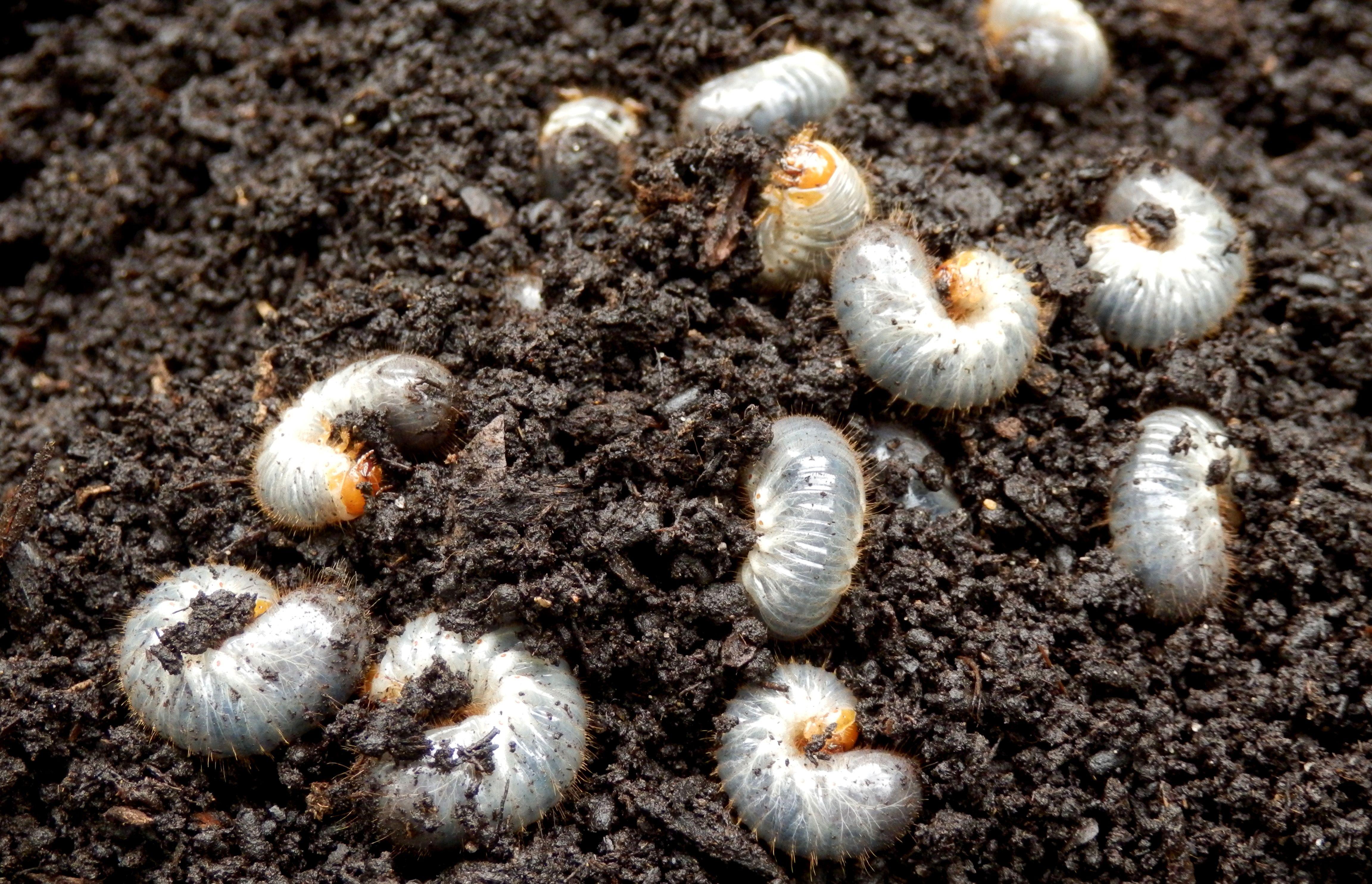Key Takeaways
- Grubs eat grass roots, which causes spongy turf, sod that's easy to pull up, and brown spots in lawns, as well as more wildlife digging as they hunt for the grubs.
- Other problems can cause similar symptoms, so actual confirmation of grubs is key to avoid unnecessary treatments.
- Solutions for grubs vary from using pesticides to simply monitoring the damage and following best lawn care practices to maintain healthy turf.
Grubs are an undercover lawn problem. They stealthily devour grass roots for days before the damage is visible. Burrowing just under the soil surface, these pests feast on organic matter in the soil, including lawn roots. After consuming the plants’ roots, grubs leave behind turf that is cut off from water and nutrients. In a few days, the rootless turf dies. An active grub infestation can create large swaths of dead turf in late summer and fall.
Whether you need to treat your lawn with a pesticide to control the grubs depends on the extent of the damage as well as on the importance of a picture-perfect lawn to you. But before taking any steps to control grubs, it's essential to know how to confirm that it is actually grubs causing the damage.
What Are Grubs?
Lawn grubs are the larvae of Japanese beetles, June beetles, and chafers. These large, white, C-shaped pests hatch in mid-summer from eggs laid in the soil by the adult beetles in spring. After hatching underground, the small worms immediately begin feeding on plant roots and decomposing stems and leaves below the soil surface.
The Life Cycle of Grubs
Grubs feed voraciously in late summer and fall. In mid-fall, grubs migrate deep into the soil to overwinter. After feeding briefly in spring, they emerge from the soil as mature beetles. Soon after, they lay eggs in the soil, and the life cycle begins again.
Grub "Hot Spots"
Grubs tend to show up in the same area year after year. If you had an infestation in an area last year, it is more likely you’ll see grubs in that location again this year, as opposed to them appearing in a different area of your landscape. Areas that are repeatedly plagued by grub infestations are called “hot spots.” These can be spot-treated with pesticides to limit the grub population in that area.
Related
Signs of Grubs in Lawn
It's easy to mistake brown spots in the lawn as grub damage when the actual problem may actually be drought related or even fertilizer burn. Scientists at Cornell University found that over 70 percent of all grub control treatments were applied needlessly because there were no grubs in the lawn. The monetary cost of grub control, along with the environmental costs, makes it important to accurately determine if grubs are at work.
Look for these clues that could indicate your lawn has a grub infestation:
- Irregular dead patches of turf. From mid-summer to fall when grubs are doing most of their feeding, patchy brown spots may appear on your lawn.
- Spongy turf. If your grass feels soft or loose when you walk across it as if it is freshly laid sod, grubs may have eaten away the roots.
- Lawn can be pulled up. In some infestations, grubs destroy the turf’s root system so much that it is easy to roll it up like a carpet because most of the roots are gone. Tug on turf suspected to be under grub attack. If it pulls up readily, look for the white, C-shaped pests.
- Skunks, moles, opossums, birds, and other animals digging in the lawn. Local wildlife senses the presence of grubs long before humans see signs and will dig up the lawn to access the grubs. It’s not uncommon for these critters to cause extensive damage to a grub-infested lawn in a single night.
Do a Grub Count
If you suspect a grub infestation, use a shovel to dig up several 1-foot square sections of turf, 2 to 4 inches thick. Turn over the pieces and count the grubs present. Healthy turf often tolerates 20 or more grubs per square foot.
A lawn stressed by drought or poor soil conditions, on the other hand, may show signs of damage with as few as 10 grubs per square foot. Take the health of your lawn and the number of grubs into consideration when deciding whether to treat with a pesticide.
Dealing with Grub Damage
Managing a grub infestation is different from homeowner to homeowner based on tolerance of damage, comfort with pesticides, and financial resources, as grub control can be costly. Here are three potential paths forward. Choose the best one for you.
Manicured lawn approach. If a lush, blemish-free lawn is essential to you, treat a grub infestation with an immediate control product that will kill grubs on the spot. These chemical pesticides should be applied when the grubs are small and actively feeding near the soil surface, usually from early July until mid-August. Follow the package directions exactly. The next growing season, follow up with a preventative grub treatment applied spring through mid-summer to reduce the grub population.
Wait and see. If you can tolerate some grub damage, simply keep an eye on the situation, and only take further action if it increases to an unacceptable level. Most often, the environmental conditions change, and the grub population naturally decreases along with the damage to your turf. Regularly fertilizing and watering your lawn will promote healthy, strong turf that withstands grubs better.
Let nature take its course. This management method is for those who do not want to use any chemical controls. Robust turf growth is often able to shrug off occasional grub pressure, so care well for your lawn by supplying necessary nutrients and water.



